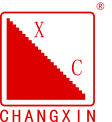How to solve the problem of tundish sizing nozzle steel clamping
The stability of continuous casting in the package is to ensure production stability and good quality of cast billet premise. Long life tundish package can reduce the number of times to replace the tundish, which not only reduces the labor intensity of workers, but also can reduce the occurrence of production accidents. Therefore, to improve …
How to solve the problem of tundish sizing nozzle steel clamping Read More »
